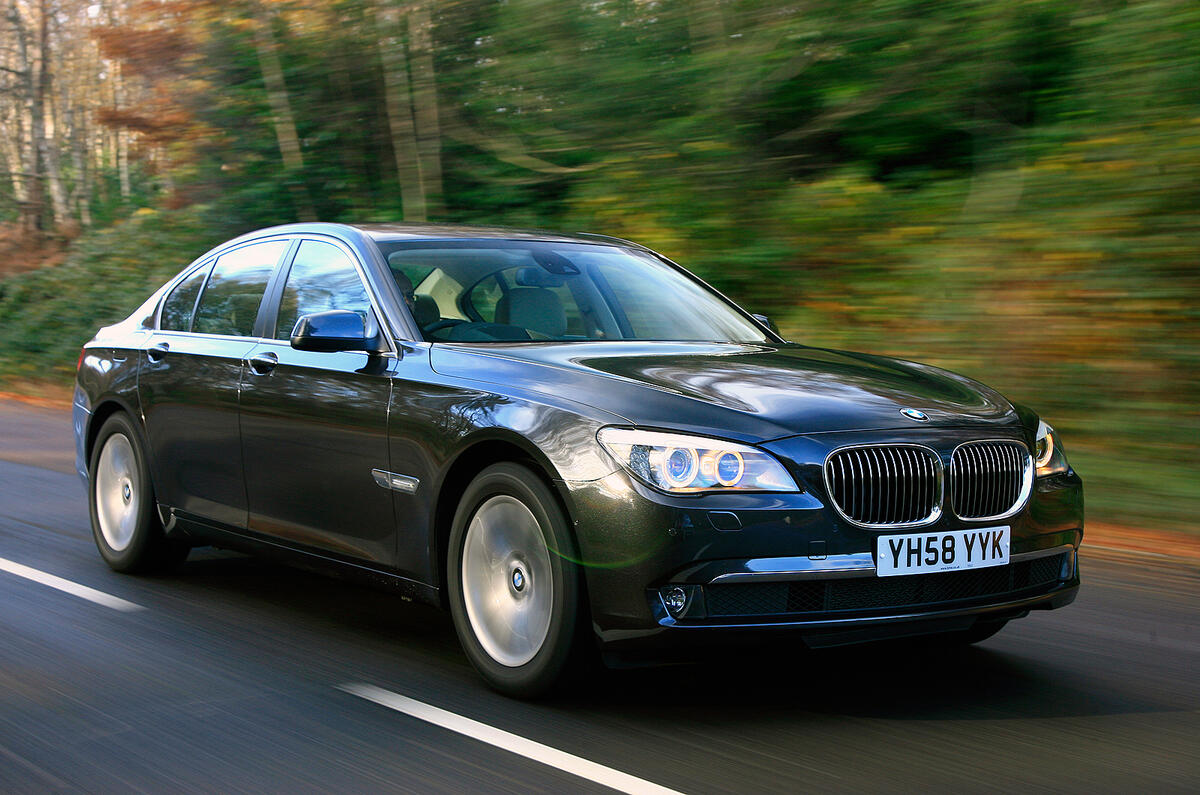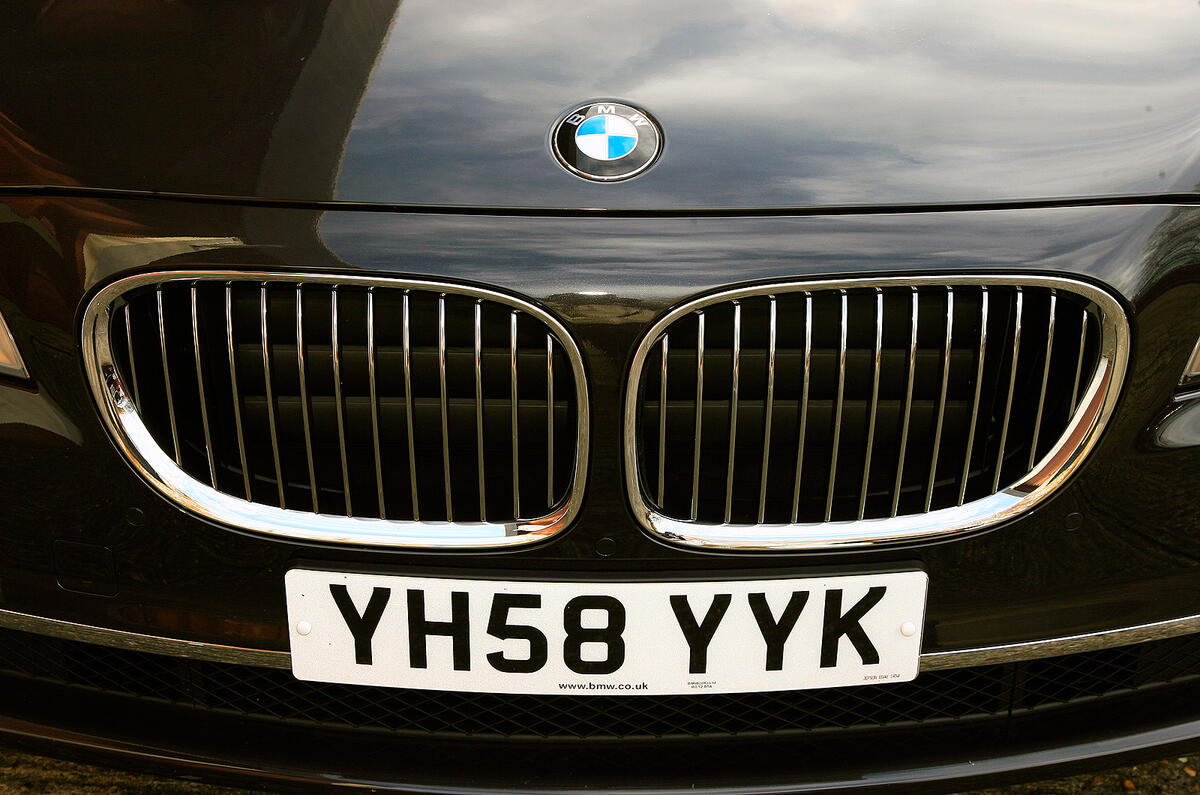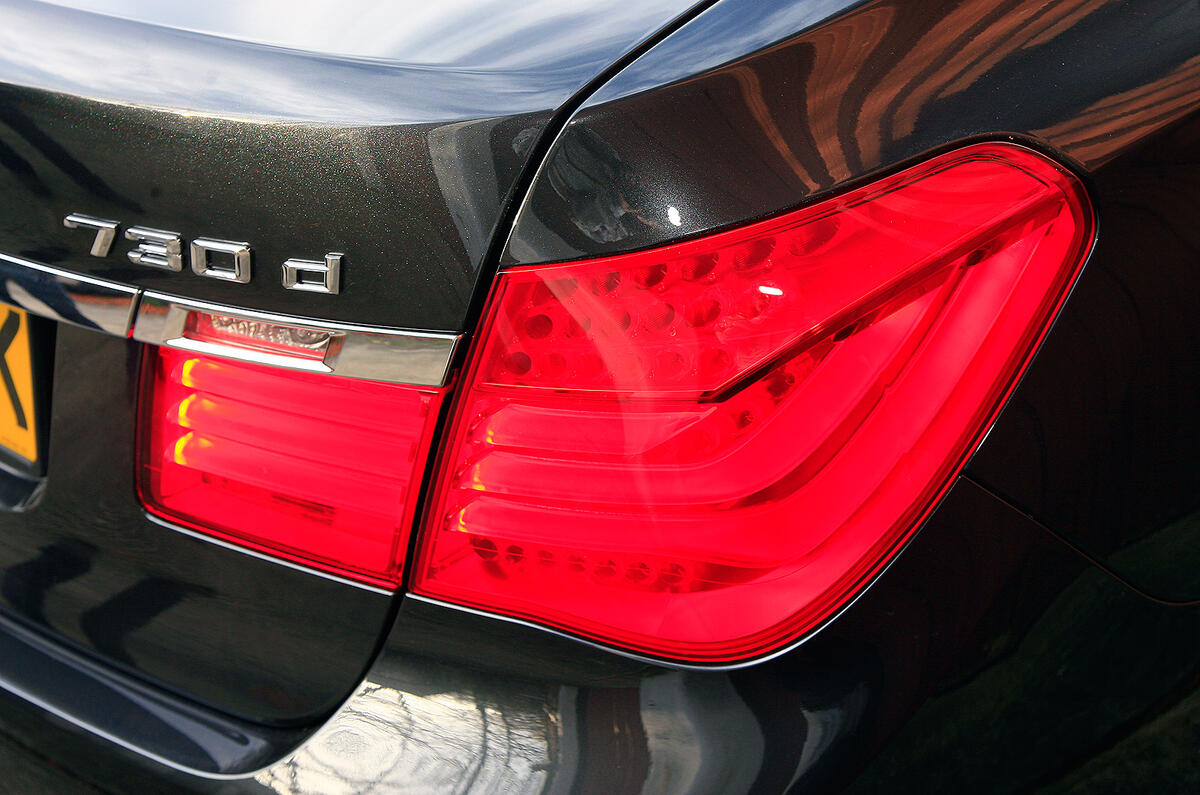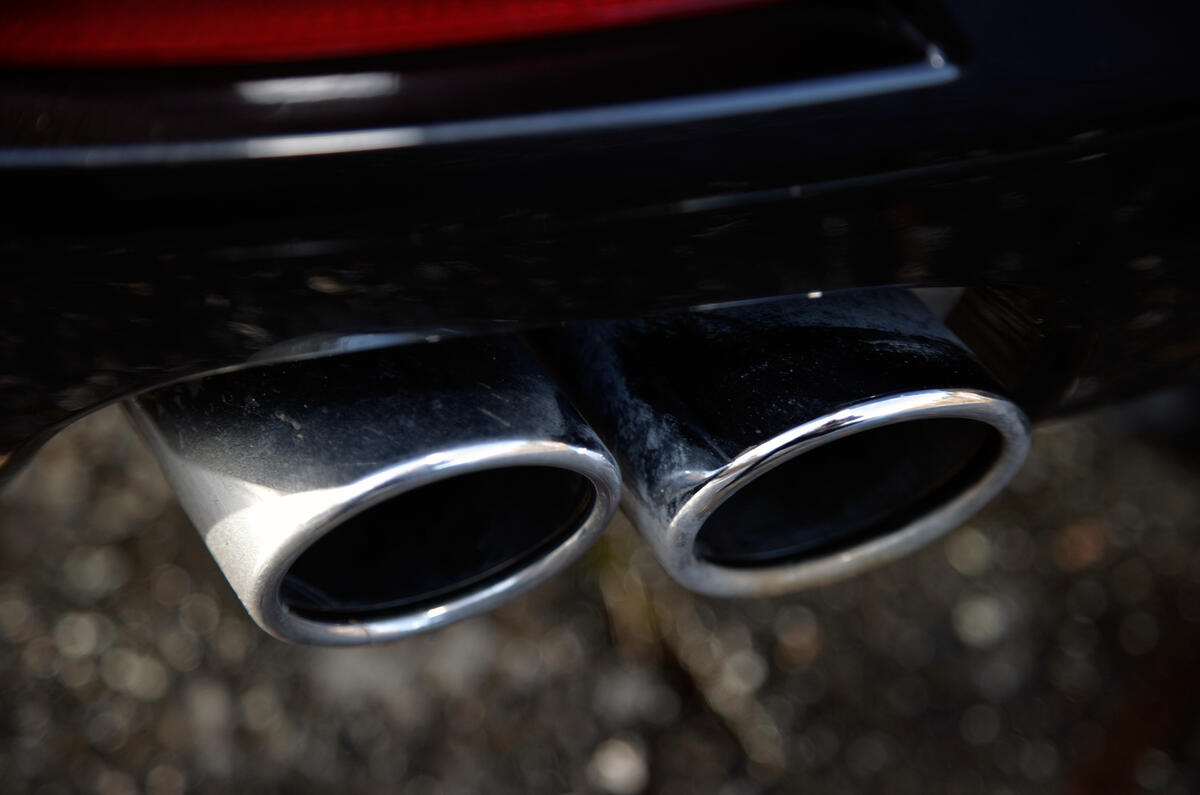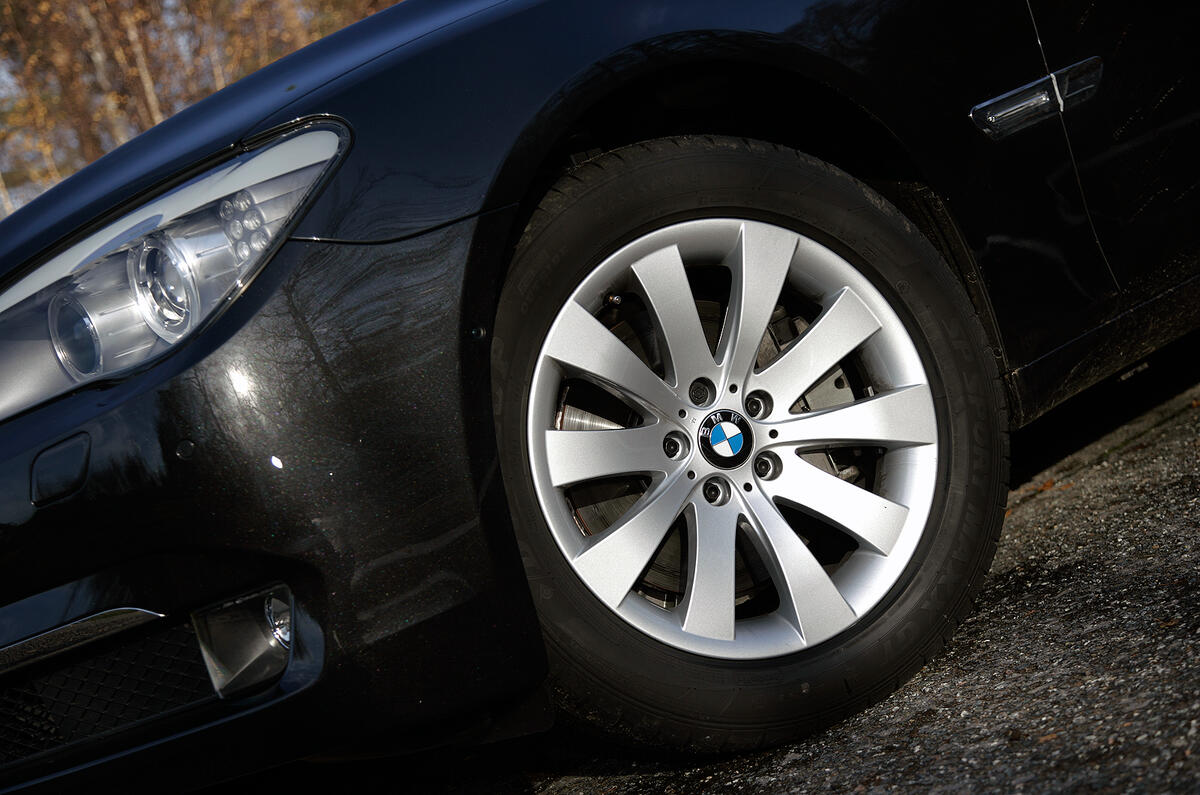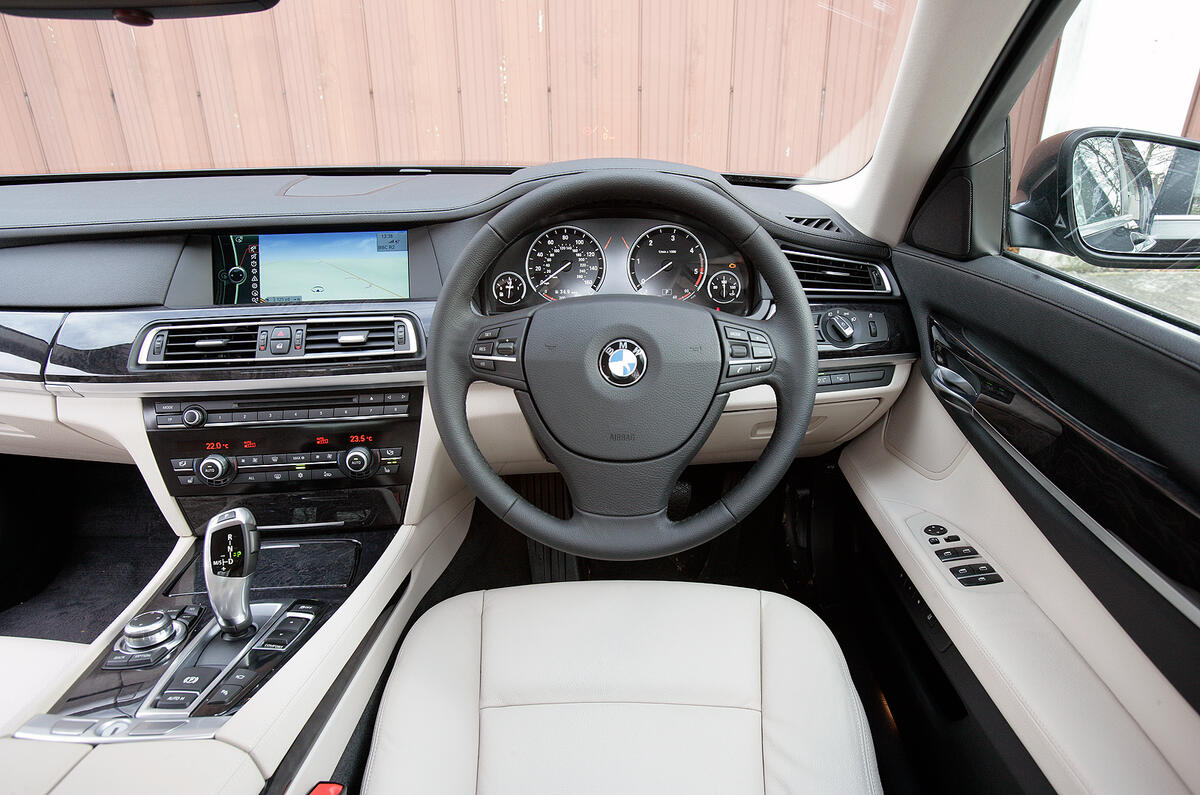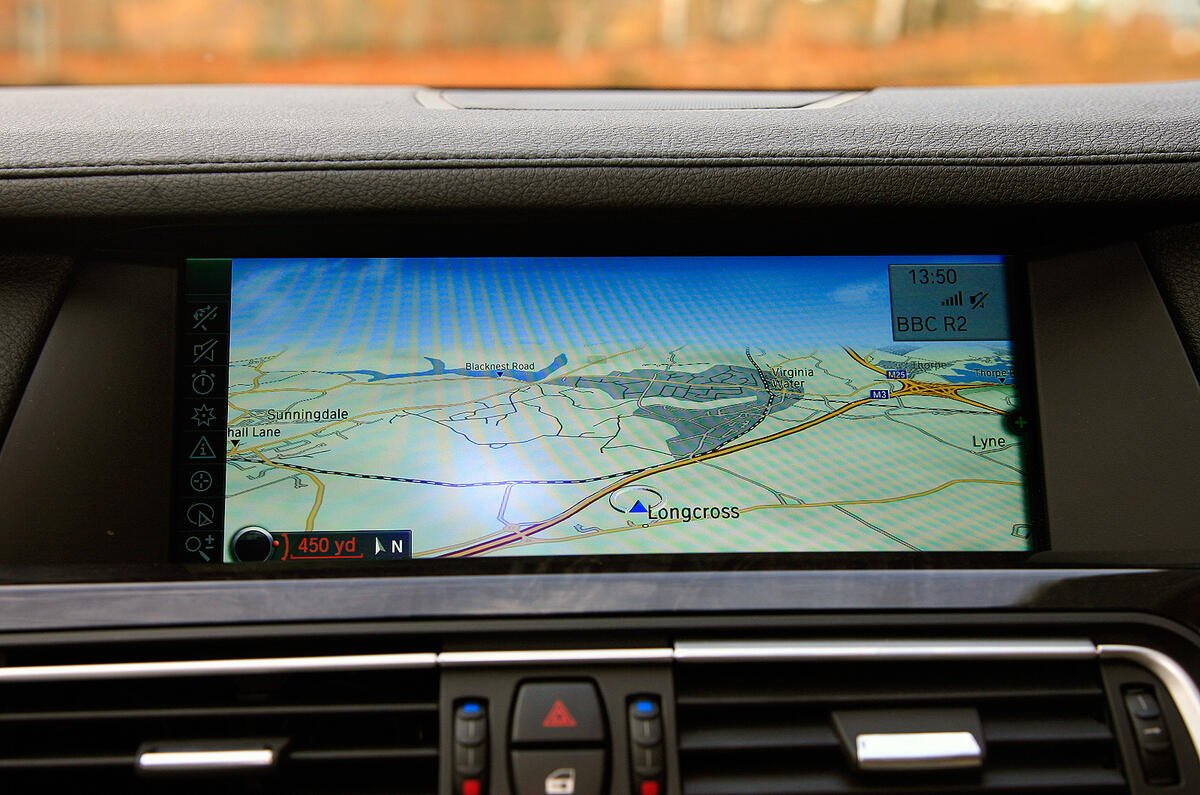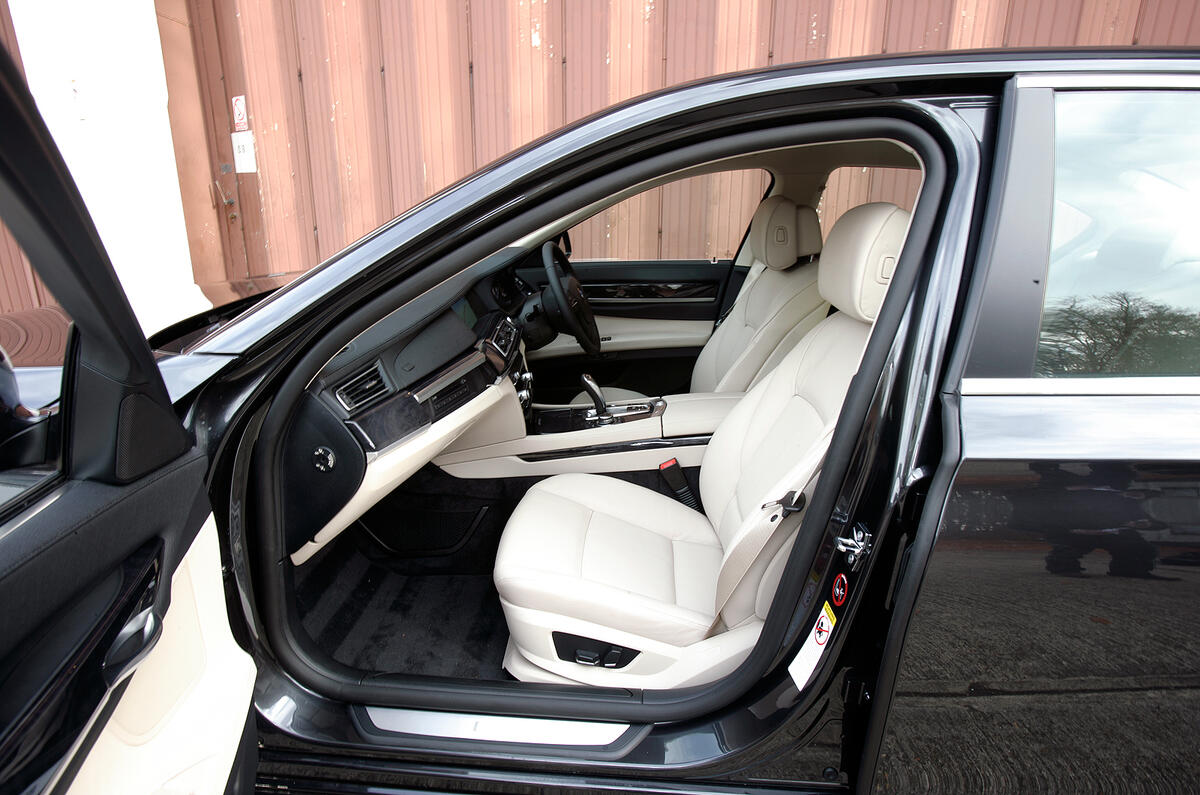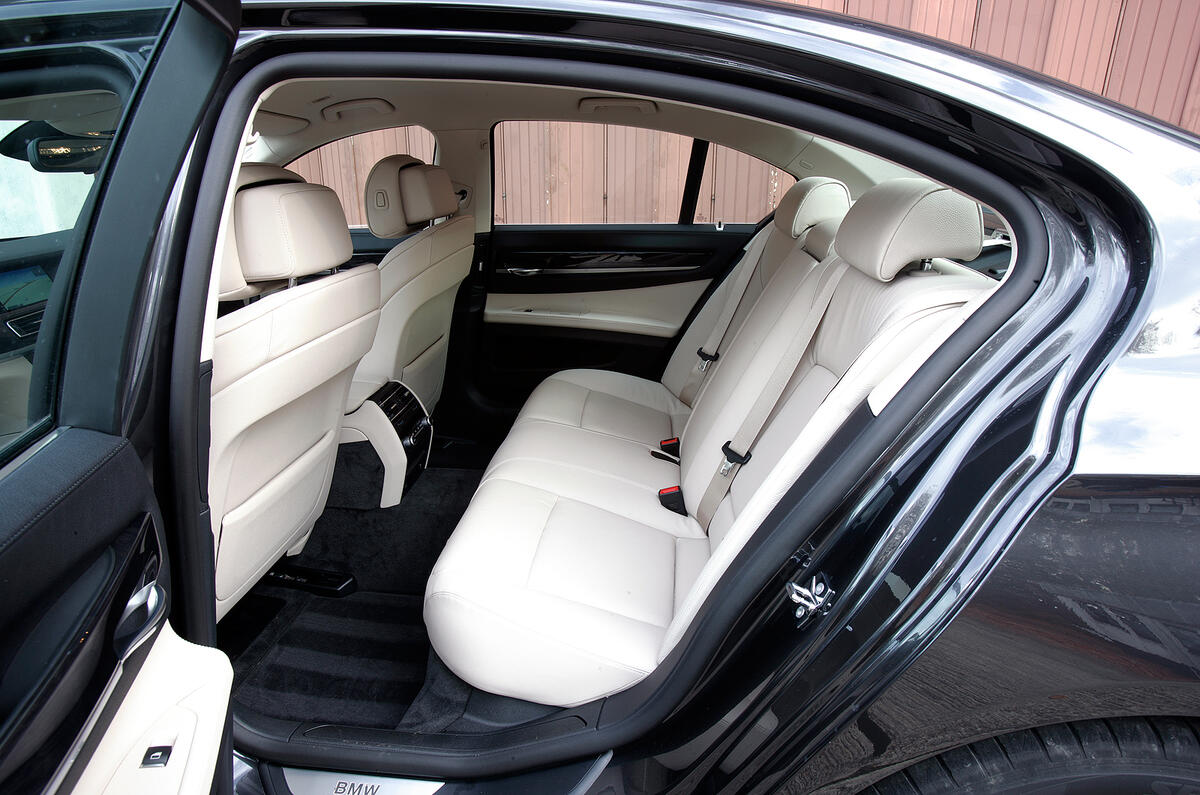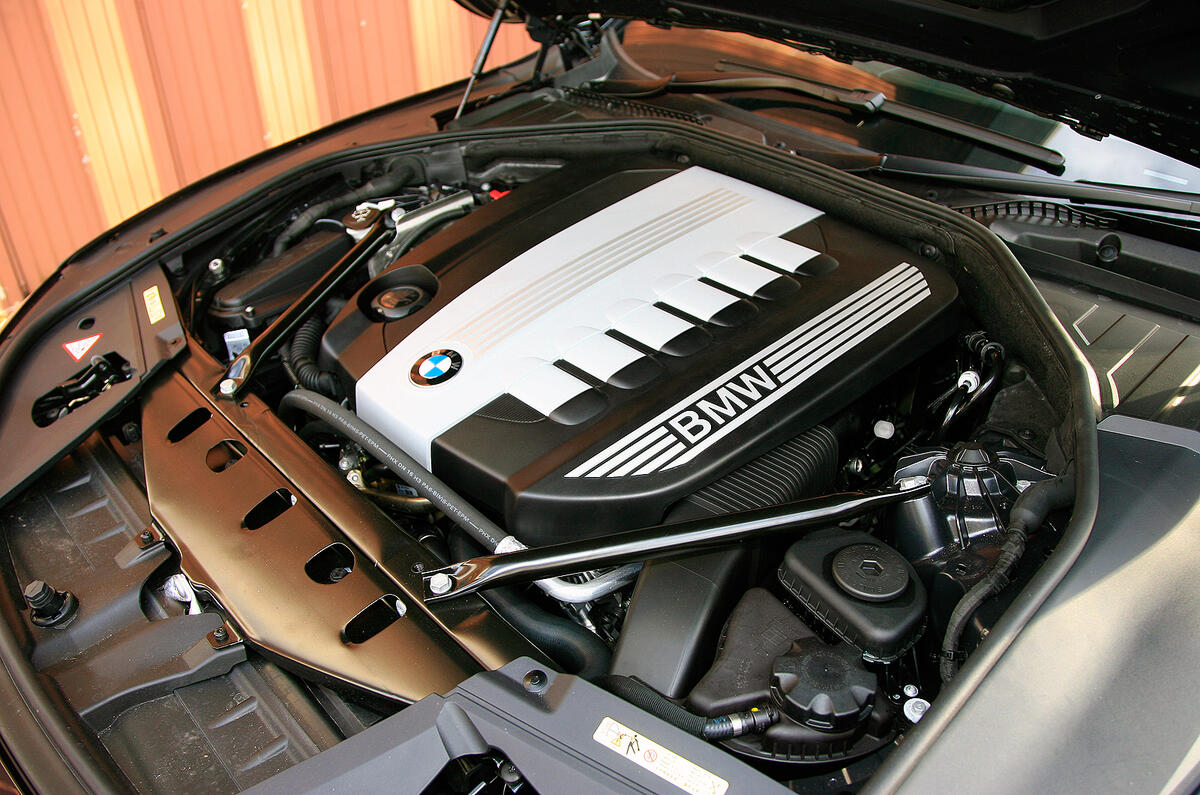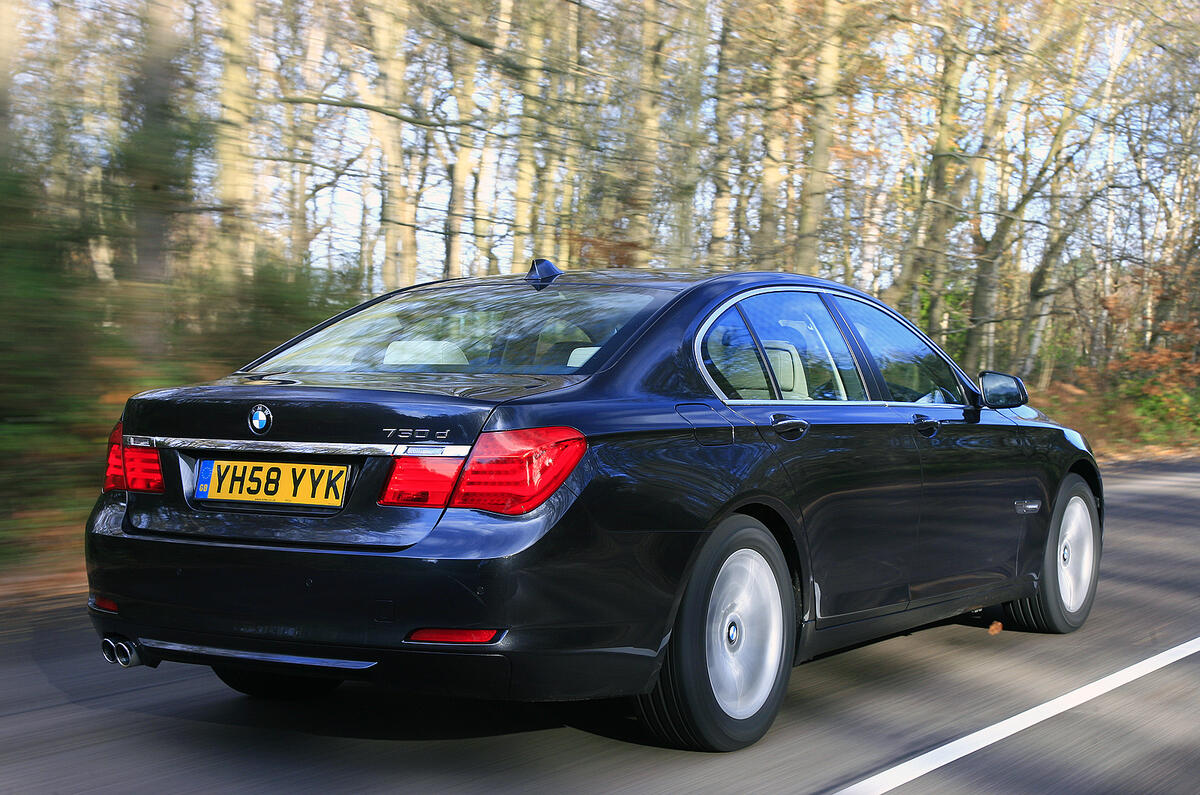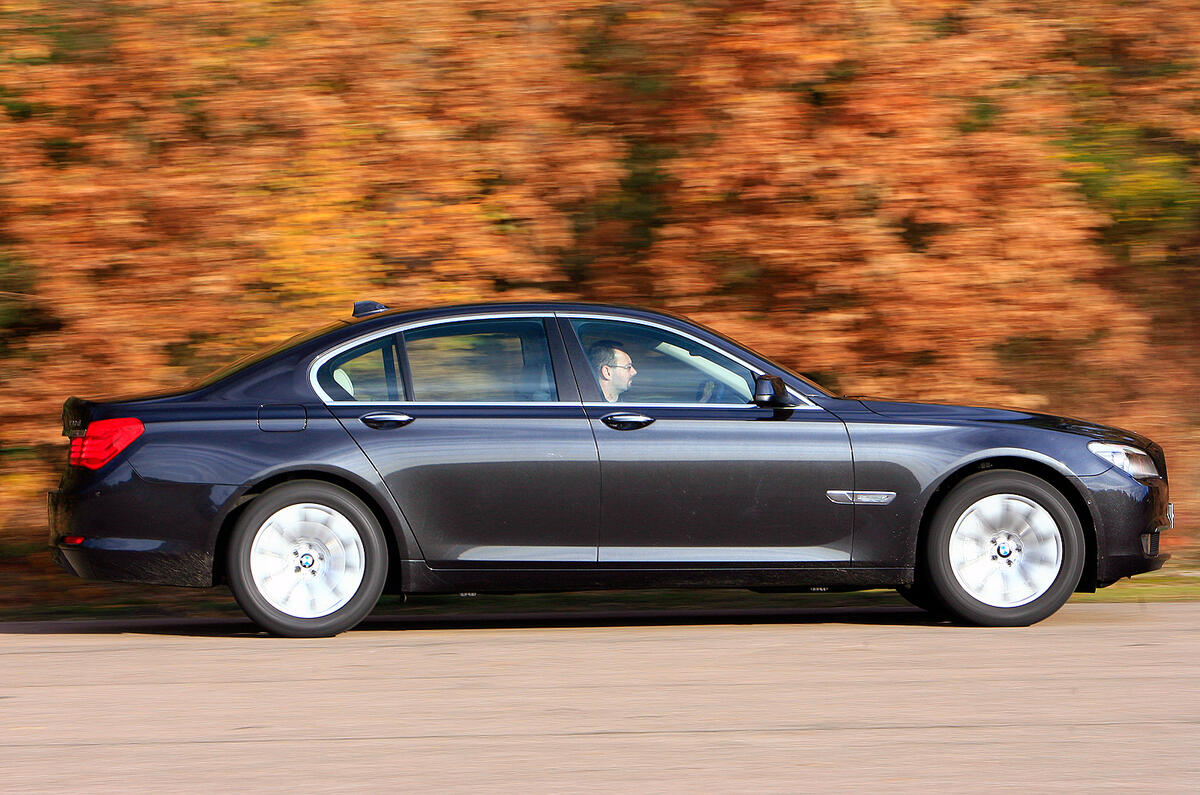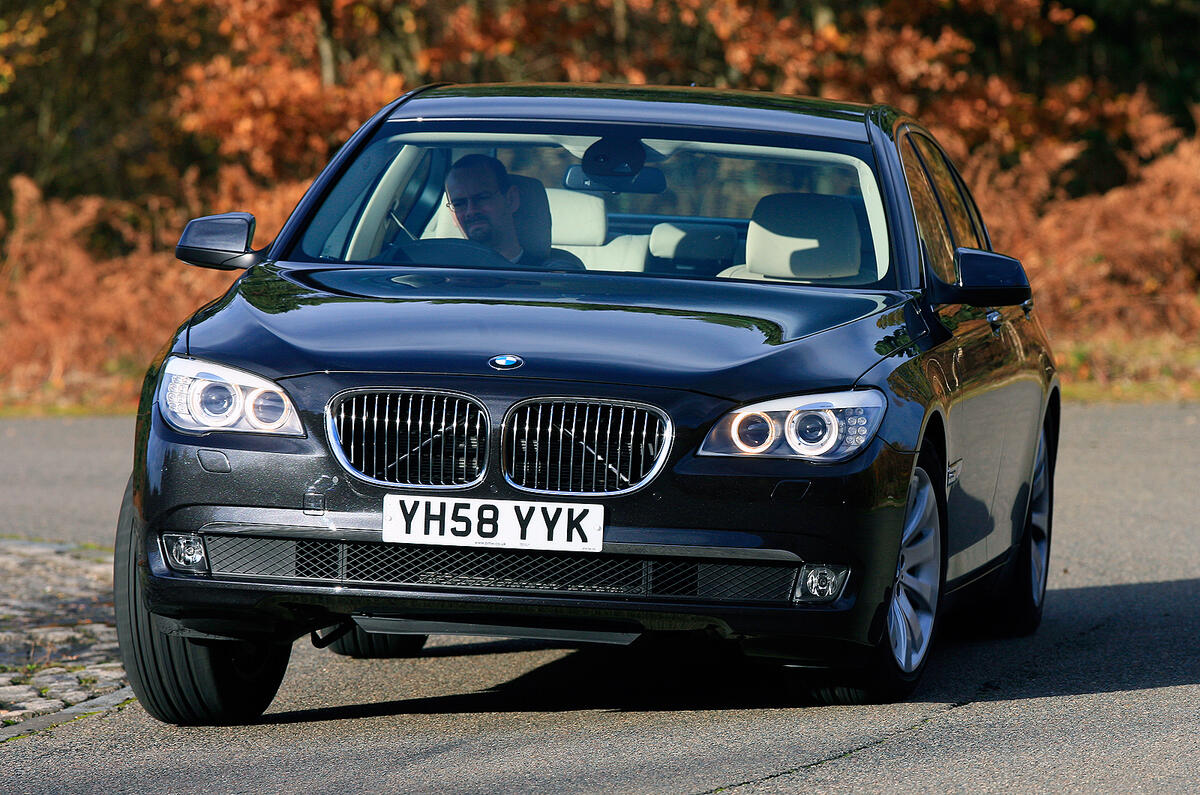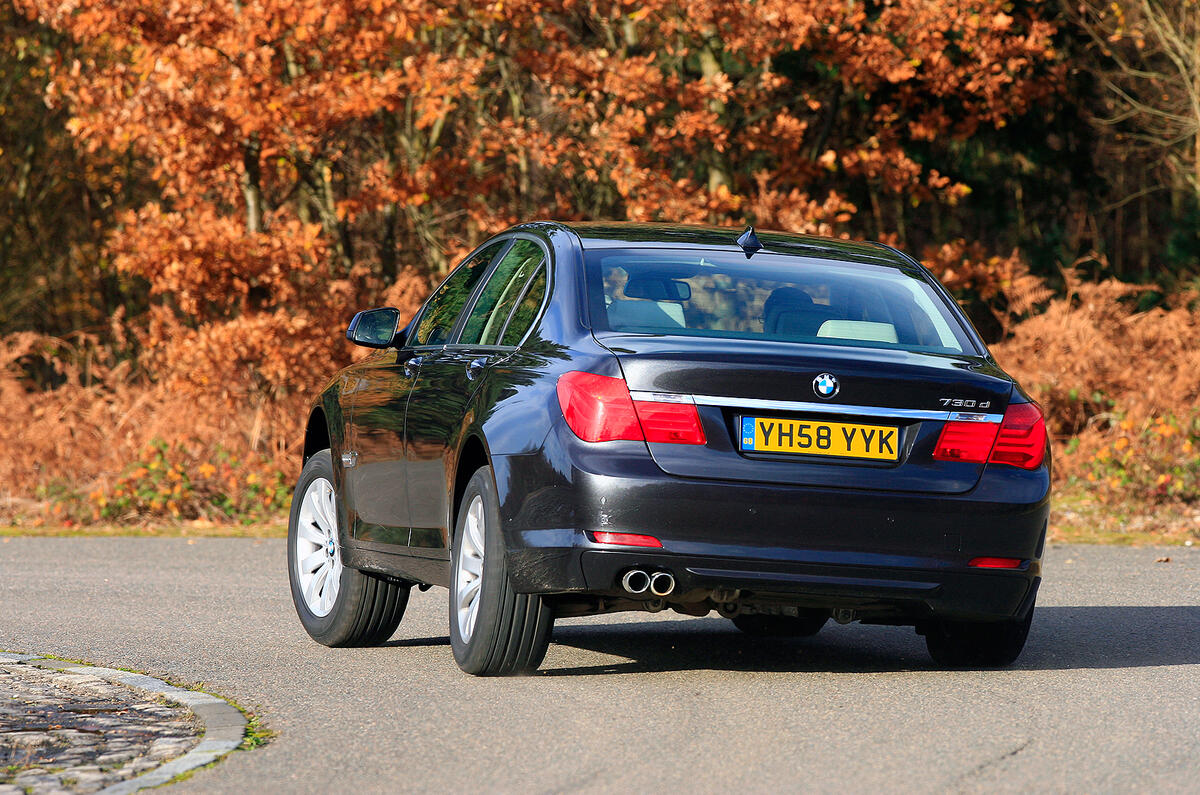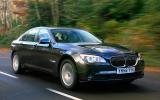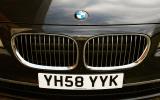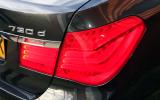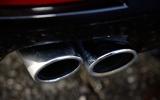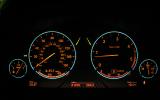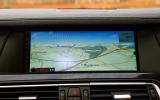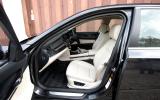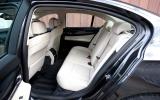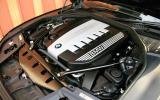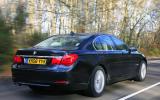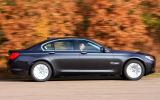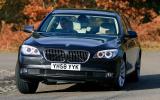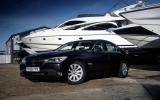Under the bonnet of the majority of BMW 7 Series models out on real roads is a bespoke version of BMW’s already excellent 3.0-litre straight six turbo-diesel. In this instance it’s been tuned to deliver as much torque as possible – an impressive 398lb ft between 1750-3000rpm – with as much refinement as you’ll find in any BMW on sale.
Power is 242bhp at 4000rpm, yet the stats also include a claimed 39.2mpg on the official combined cycle. The 730d also produces the least CO2 of any car in its class at just 192g/km.
No matter how many times you experience the low-down pulling power of a high torque turbo-diesel, there is still something spooky about being able to summon so much acceleration with so few revs on board.
This is the defining factor in the 730d’s extraordinary performance repertoire; you put your foot down at anything above 1500rpm and instantly you accelerate hard towards the horizon, the turbo-diesel engine all but inaudible above the gentle rush of the wind and the increasingly loud rumble from the tyres.
Ultimately you can gun this the car from a standstill to 60mph in 6.9sec and to 100mph in 17.7sec – about the same as a VW Golf GTI at maximum attack, in other words. Yet, because the 730d is so refined as it delivers its performance, it somehow feels faster than that because you don’t expect so much thrust from such a large, seemingly cumbersome machine. Top speed, for the record, is 153mph.
What also adds to the effect is the excellent relationship the diesel engine shares with the six-speed automatic gearbox. Left in D and with the dampers/throttle mapping/gearchange modes in Regular, the transmission seems to find the perfect gear for every occasion, even if it does hang on to a gear too low occasionally in Sport.
All told, there seems little reason to choose any other 7 Series engine option, although the more powerful 740d has virtually the same CO2 score despite its extra 59bhp.
For maximum profligacy, there's always the mighty 760Li with a 6.0-litre petrol V12, 544bhp and a cringeworthy 303g/km. BMW claims 4.6 seconds to 62mph, which seems completely believable. Top speed is as usual limited to 155mph, and as a measure of the performance when the limiter kicks in, even doing so gradually, the reduction in acceleration is marked.
For the most part the BMW’s V12 remains almost completely silent, whether at idle or low to mid range revs, and unless you have an awful amount of space available, you will rarely get the engine spinning much beyond 4000rpm.
Such is the effectiveness of the turbochargers – peak torque is available from 1500rpm onwards and doesn’t let up until 5000rpm – that unless you use the manual mode to lock the gearbox in an unnaturally low ratio, trying to exercise the engine results in so much speed that you are forced to back off before the engine gets even remotely vocal. And for a turbo-charged engine the response is extremely clean and immediate, the only real sign of forced induction the faintest distant hiss.
There is little wrong with the way a 7 Series stops, either, thanks to its fine all-round ventilated disc braking system. Although there’s a fair bit of movement under a big stop, pedal power and feel is beyond fault and there’s a pleasingly unintrusive ABD system as well should you get into really big trouble.


